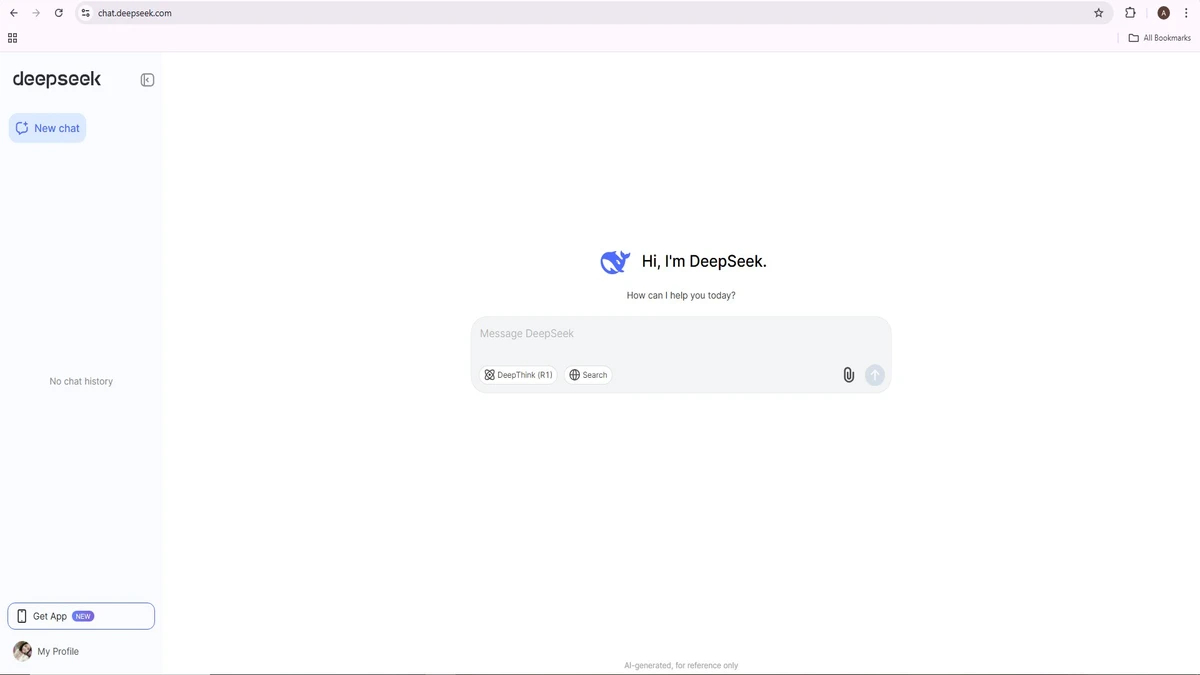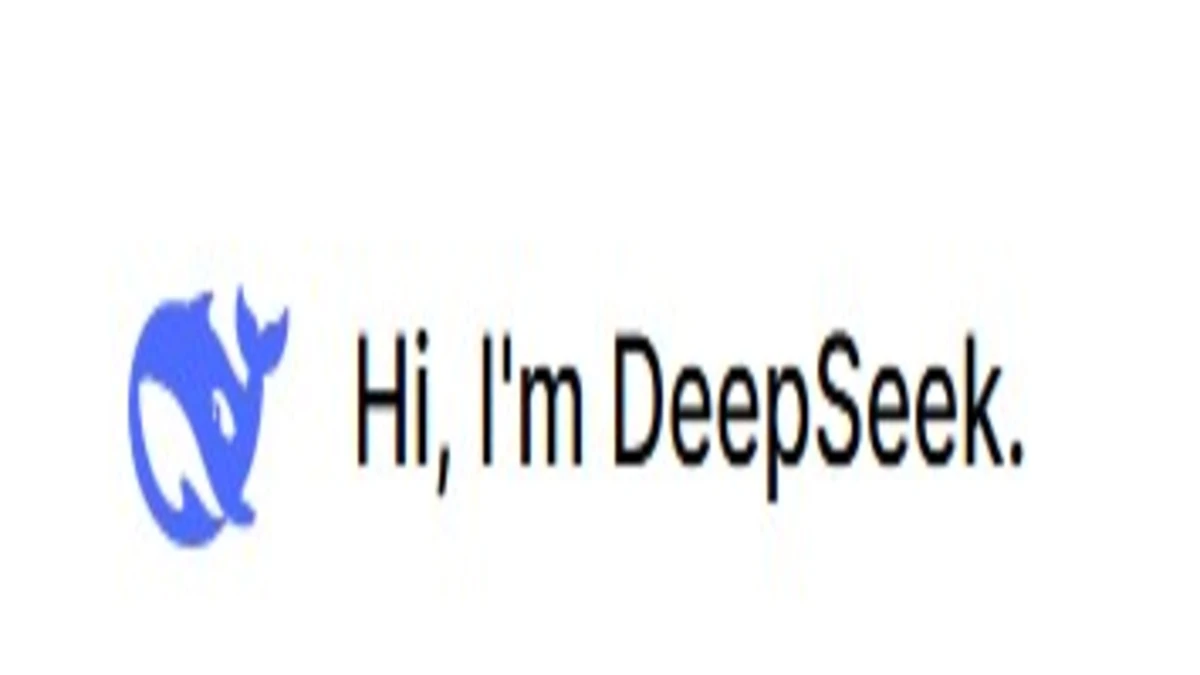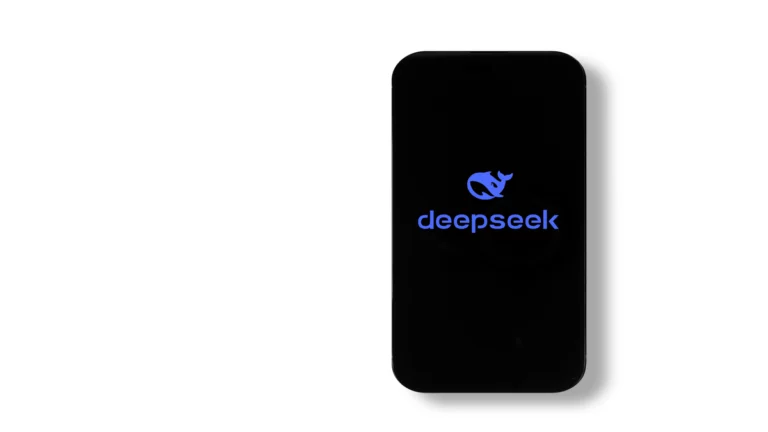For the past several years, artificial intelligence has been dominated by major U.S. companies, with OpenAI’s ChatGPT, Google’s Gemini, and Anthropic’s Claude taking center stage. These models have set the global standard, offering cutting-edge natural language processing and artificial intelligence capabilities. However, a china breakthrough is emerging, with DeepSeek challenging Western dominance. With its innovative approach and cost-efficient methods, DeepSeek is quickly gaining attention and challenging the dominance of the West. DeepSeek is not just another player in the AI race—it’s a model that might outperform OpenAI in some crucial areas. With impressive breakthroughs in programming, problem-solving, and efficiency, DeepSeek’s rise is making seasoned AI experts question the future of the global AI race. This article explores how DeepSeek is evolving, what makes it unique, and whether it could surpass established AI giants like OpenAI shortly.
What Is deepseek , and Why Is It a Big Deal?
 DeepSeek is a Chinese artificial intelligence startup developing large language models (LLMs), similar to ChatGPT. But unlike Western giants, which pour hundreds of millions into training their models, DeepSeek took a radically different path—and succeeded.
DeepSeek is a Chinese artificial intelligence startup developing large language models (LLMs), similar to ChatGPT. But unlike Western giants, which pour hundreds of millions into training their models, DeepSeek took a radically different path—and succeeded.
- ai bot breakthrough of the year: DeepSeek’s recent model was trained for less than $6 million, while GPT-4 Turbo reportedly costs over $100 million to build.
- Lightning-Fast Growth: In just a few months, DeepSeek’s chatbot app became one of the most downloaded free apps in the U.S. App Store, briefly surpassing OpenAI’s ChatGPT.
- Performance-Driven: Despite its lean training budget, DeepSeek V3 demonstrates high-level competence in programming, math, and natural language understanding.
china breakthrough: What Makes DeepSeek So Different?
1. Self-Taught Intelligence
Most AI models (like ChatGPT) require thousands of hours of human effort to train. Trainers give feedback, filter responses, and fine-tune the model through reinforcement learning. DeepSeek skipped much of this human oversight. Instead, it used self-learning stages, where the AI trained itself using massive amounts of open data and clever algorithms. This “teach yourself” method saves money, accelerates the learning process, and removes human bias from some areas.
2. Mixture of Experts (MoE)
DeepSeek uses a modern architecture technique called “Mixture of Experts,” where the model only activates a small subset of its brain at any time. This is like asking only the relevant departments in a company to work on a task instead of gathering the whole company for every decision. The result? More power, faster speed, less cost.
3. Memory Compression and Sparsity
DeepSeek’s model can remember more and run faster because it uses memory compression and sparsity techniques. In other words, it packs more knowledge into a smaller memory space and doesn’t waste energy on unnecessary calculations.
How DeepSeek Performs Against open ai’s GPT-4 Turbo
 When DeepSeek V3 quietly entered the scene, its performance metrics raised eyebrows, especially compared to the established GPT-4 Turbo. Here’s a deeper look at how the two models reportedly stack up:
When DeepSeek V3 quietly entered the scene, its performance metrics raised eyebrows, especially compared to the established GPT-4 Turbo. Here’s a deeper look at how the two models reportedly stack up:
Performance Comparison
Here’s a performance comparison table of DeepSeek-R1 and OpenAI’s o1 model across three critical AI benchmarks: general reasoning, math ability, and coding skills. Each category reflects the model’s strengths in real-world problem-solving contexts.
| Category | Benchmark Description | DeepSeek-R1 | OpenAI o1 | Key Insight |
| General Reasoning | GPQA Diamond: Tests advanced, multi-step reasoning across domains | 71.5% | 75.7% | OpenAI’s o1 performs better here, thanks to its hybrid architecture (supervised fine-tuning + reinforcement learning), offering broader contextual understanding. |
| Math Ability | MATH-500: Assesses advanced quantitative problem-solving | 97.3% | 96.4% | DeepSeek-R1 slightly outperforms, showing superior adaptability in handling novel mathematical challenges via reinforcement learning. |
| Coding Skills | Codeforces: Evaluates practical programming under real-world constraints | 96.3% | 96.6% | Both models excel, but open ai holds a marginal lead, likely due to broader exposure to diverse coding scenarios. |
This comparison underscores how DeepSeek-R1 is catching up rapidly, often matching or surpassing OpenAI in math, while slightly trailing in reasoning and programming, yet at a significantly lower development cost.
Cost Comparison
Understanding the different cost components is essential for budgeting and resource planning when evaluating AI models for deployment. Let’s break down each pricing metric and compare the costs between deepseek-R1 and OpenAI’s o1.
| Cost Component | Description | DeepSeek-R1 | OpenAI |
| Cached Input Costs | Cost for reprocessing repeated or previously seen content. Ideal for tasks with memory/context use. | $0.14 per 1M tokens | $7.50 per 1M tokens |
| Input Costs | Charges for analyzing brand-new, unique text inputs. | $0.55 per 1M tokens | $15.00 per 1M tokens |
| Output Costs | Fees for every 1 million tokens generated by the model, including summaries, answers, or code. | $2.19 per 1M tokens | $60.00 per 1M tokens |
DeepSeek-R1 offers dramatically lower pricing in all categories, making it a highly cost-effective option for developers, startups, and businesses looking to integrate AI without burning budgets. The difference is especially stark in output generation, where OpenAI’s o1 is nearly 27 times more expensive per million tokens.
Financial Shockwaves: Why Nvidia’s Stock Dropped After DeepSeek’s Reveal
The shockwaves weren’t just technical — they were financial too. Shortly after the announcement of DeepSeek V3’s performance and efficiency, Nvidia’s stock fell. Why? Because DeepSeek’s architecture, considered an ai bot breakthrough of the year, proves that future models might not need as many expensive Nvidia GPUs. If the world shifts toward efficient, lightweight AI models:
- Fewer chips are required.
- Less infrastructure is required.
- Profits for GPU suppliers could shrink.
In other words, DeepSeek has threatened the foundation of how today’s AI is built and monetized.
Safety and Security: How OpenAI and DeepSeek Keep Their Models in Check
 When it comes to AI security, DeepSeek has managed to outpace OpenAI with its innovative and transparent approach.
When it comes to AI security, DeepSeek has managed to outpace OpenAI with its innovative and transparent approach.
- Open-Source Transparency: DeepSeek’s open-source model allows global developers to contribute to identifying and fixing vulnerabilities actively, ensuring rapid and continuous security updates.
- Community-Driven Security: The decentralized approach allows for quicker security improvements through direct feedback from the development community, unlike OpenAI’s formal and slower updates.
- Reinforcement Learning: DeepSeek uses self-correcting mechanisms powered by reinforcement learning, aligning the model’s behavior more closely with user expectations.
- Agility: deepseek’s rapid evolution and flexibility put it ahead of OpenAI regarding adaptive security mechanisms.
Also read:
- How AI Agents Can Run Your Life on Autopilot
- AI Trends in Healthcare to Look After- Let’s Find Out
- What is Project Magi- Major Change Google is Making to Google Search
- AI Story Generator Tools that All Fiction Writers Must Know About!
- The Significance of Business Impact Analysis in Cybersecurity
DeepSeek R1: The Reasoning-Focused Model That Thinks Step-by-Step
While DeepSeek V3 has already impressed the world with its efficient performance and coding abilities, the company has quietly launched the DeepSeek R1, another model that pushes further boundaries. So, what is R1, and why does it matter? Unlike traditional language models, which often give quick answers based on pattern recognition, DeepSeek R1 is designed to reason like humans. It doesn’t just predict the next word—it thinks through the steps to solve problems.
What Makes R1 Special?
- Step-by-Step Reasoning: R1 tries to simulate how humans break down complex tasks. Whether solving a logic puzzle, writing multi-stage code, or analyzing abstract concepts, the model takes a methodical approach.
- Designed for Depth Over Speed: Rather than giving fast, superficial answers, R1 is built to slow down and think. This shift provides a significant advantage in scientific research, mathematical proofs, and logical deductions.
- Enhanced Interpretability: Because R1 explains its steps as it goes, users can follow the AI’s logic, which boosts transparency—something often missing in traditional AI models.
How R1 Strengthens DeepSeek’s Edge Over OpenAI

OpenAI’s GPT-4 is an impressive generalist model, capable of handling casual conversations and creative writing. But when it comes to deep, step-by-step problem-solving, even GPT-4 can sometimes hallucinate or skip crucial reasoning steps. With R1, DeepSeek is entering a niche open ai has yet to master fully. It’s building a tool that isn’t just answering—thinking aloud, bringing AI closer to how humans work through challenges. If DeepSeek continues refining this path, we might soon see a world where:
- Chatbots become tutors, guiding students through math and science.
- AI assistants become research partners, proposing experiments or logical proofs.
- Business leaders trust AI reasoning, using it to back up high-stakes decisions.
DeepSeek’s Efficiency Revolution: Smarter AI, Smaller Costs
What sets DeepSeek V3 apart from giants like OpenAI isn’t just its performance — it’s the revolutionary efficiency behind the scenes. DeepSeek has proven that building a high-performing large language model (LLM) doesn’t require billions in funding.Instead, the company has focused on two groundbreaking techniques that could shape the future of AI development, marking a china breakthrough in the field.
1. Sparse Activation: Smarter Parameter Training
DeepSeek V3 features around 671 billion parameters, similar to models like GPT-4. But here’s the twist — DeepSeek uses a technique based on “sparsity”. Rather than activating all parameters for every prompt, DeepSeek intelligently selects and trains only the most relevant ones for each task. This drastically reduces training time and computation without compromising accuracy. This sparse activation method optimizes performance while slashing resource use, making DeepSeek one of the most cost-effective AI models in the world. It’s an efficiency model likely to influence the next wave of LLMs.
2. Efficient Memory Compression: Fast, Lightweight Performance
In addition to more innovative training, DeepSeek has optimized how its model stores and retrieves information. Implementing advanced memory compression techniques reduces the strain on system hardware and accelerates access to relevant data. This allows the model to perform complex reasoning and dialogue generation more swiftly, even on modest computing setups. These two innovations enable DeepSeek to compete head-to-head with GPT-4 Turbo, but at a fraction of the cost and computational demand.
The Future of AI Deployment: DeepSeek’s Growing Influence
The emergence of deepseek-R1 alongside models like OpenAI’s o1 is reshaping the future of artificial intelligence. This new wave of AI development blends cost-efficiency with high performance, challenging the notion that only billion-dollar models can lead the market. DeepSeek’s lean approach enables businesses to access powerful AI tools without the hefty price tag. As a result, organizations are embracing a hybrid AI strategy—using different models for different tasks. For instance, OpenAI’s o1 may be preferred for secure, enterprise-grade applications, while DeepSeek-R1 offers an affordable solution for large-scale data tasks or research. This flexibility represents a significant turning point in the AI industry. Companies can now customize their AI stack according to specific needs—whether it’s reasoning, coding, or cost-effectiveness. This trend indicates a future where AI is more accessible, customizable, and decentralized, leading to a more inclusive AI ecosystem driven by innovation and efficiency.
Conclusion
china breakthrough, with DeepSeek leading the way, signals a monumental shift in the global AI landscape. By challenging established giants like OpenAI, DeepSeek has proven that efficiency and cost-effectiveness can rival performance. Its self-taught model, paired with sparsity and memory compression innovations, has set a new standard for AI development. As businesses adopt hybrid models for specific tasks, DeepSeek is becoming a powerful alternative for cost-effective, high-performance AI, making the future of artificial intelligence more accessible and versatile.
To Get More Updates, Click Here

















